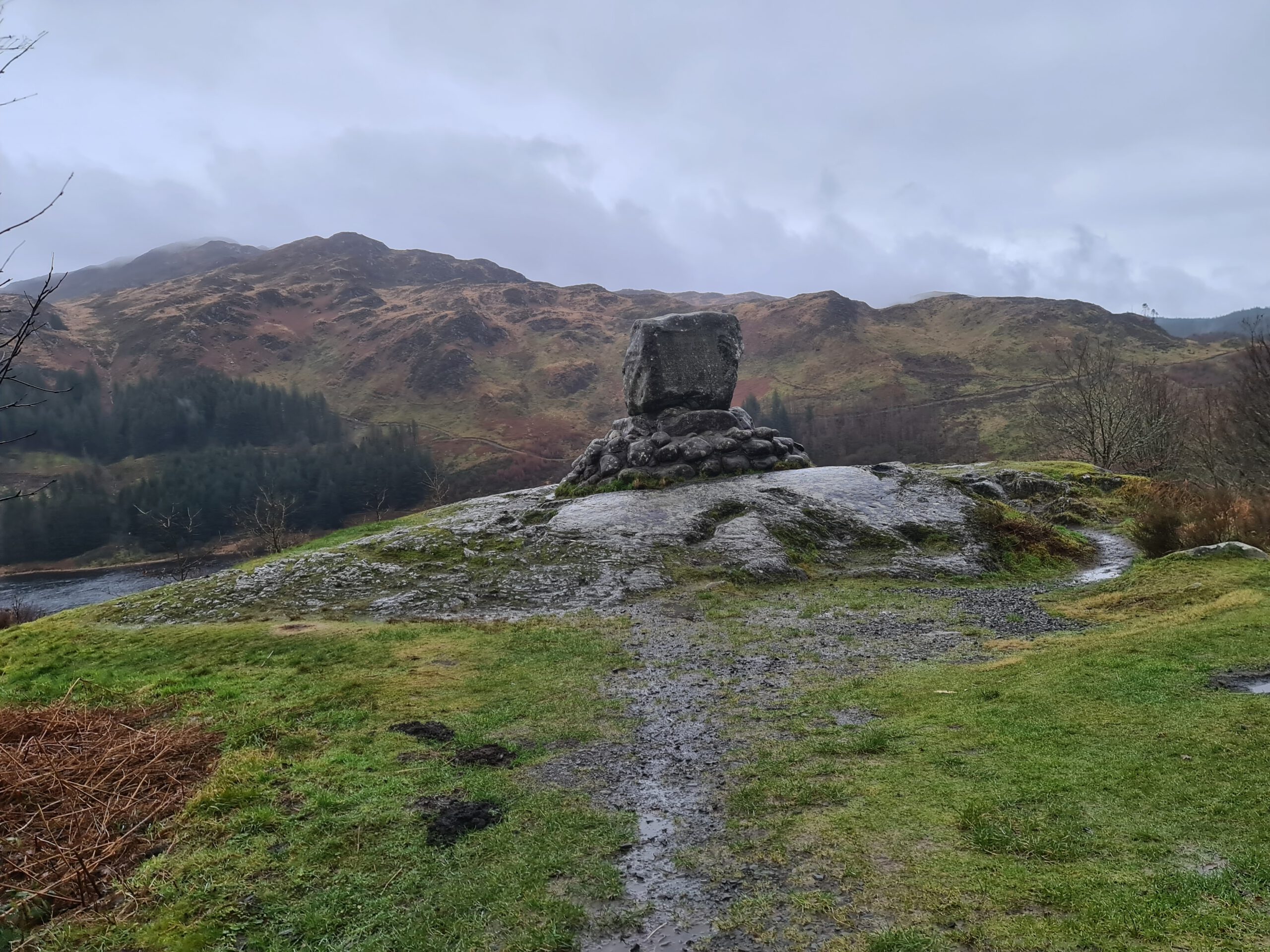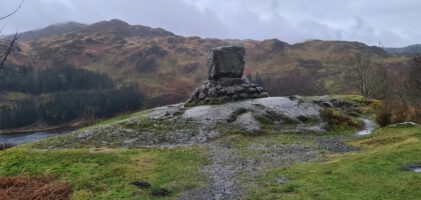Location: Glen Trool, Dumfries & Galloway, Lowlands of Scotland
kind of battle: Guerrilla attack by Bruce’s forces
today: no clear battlefield left
public transport: non to Glen Trool itself, but regular buses from Dumfries (etc.) to Glentrool village
scheduled monument: no
battlefield managed by: no one (there is no clear enough information or proof where the battle was actually fought and by that Historic Environment of Scotland can’t designate the battlegrounds, as they stated in a report on the matter))
entrance fee: £ 0
opening times: all day all year round
directions: Google Maps
The infamous Battle of Glen Trool was one of the battles during the First War of Scottish Independence in which Robert the Bruce played a central role and alongside William Wallace might be one of the most well-known names.
It was fought in April of 1307, between the Kingdom of Scotland under King Robert I and the Kingdom of England under Aymer de Valence, who would later become the Earl of Pembroke. The battle famously ended in a Scottish victory, given that the Scottish army was built of several hundred of infantry while the English mainly had cavalry this was quite an achievement for Robert the Bruce. Moreover so since the casualties of the Scots were very low compared to the English loses.
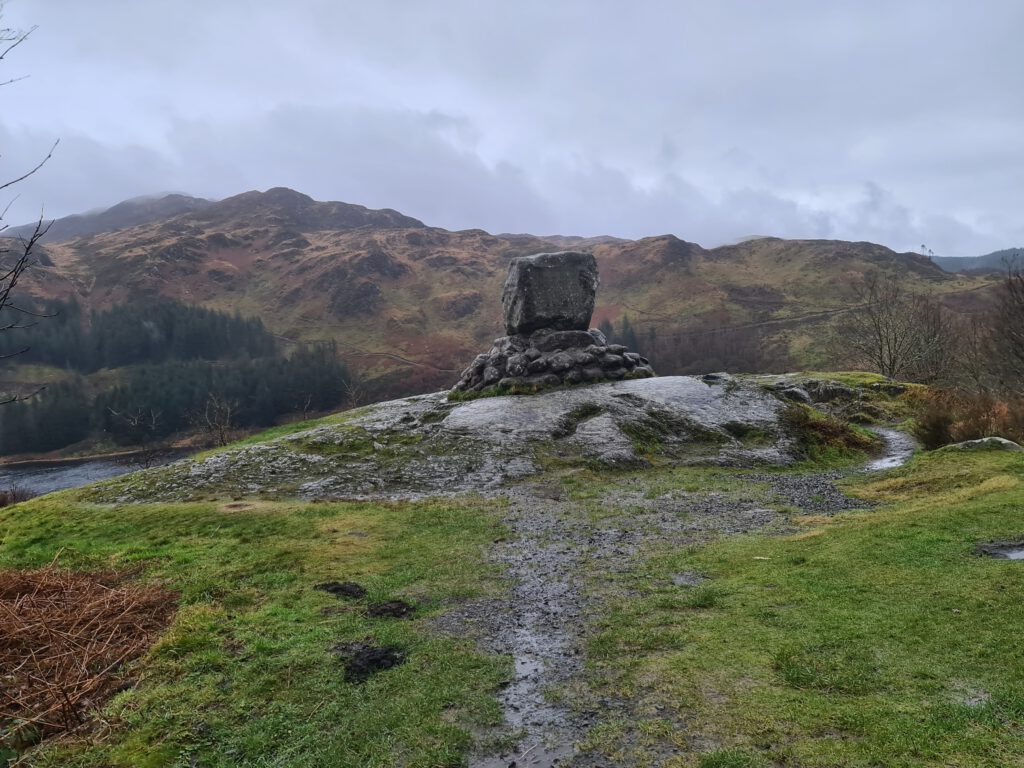
Surrounding this battle there is some information also needed, about the events taking place before the battle itself, such as the whole Comyn and Bruce story, starting with Alexander III of Scotland, dying with only one heir, the Maid of Norway (dying in the Orkney Islands on her way to Scotland) and with the end of the House of Dunkeld of which Alexander was the last. These events triggered something coming close to a civil war, which led the nobles of Scotland to invite Edward I of England to choose the strongest claimant to the Scottish throne. Most people will know that Edward picked John Balliol, using him as some kind of a puppet, Edward being the feudal superior over John, the control over Scotland was more in Edwards hands than Johns at this point in time. All this ended with John on a certain point, putting his foot down and Edwards invasion as a ragging response, defeating the Scots at the Battle of Dunbar, destroying the last bit of stable relations between Scotland and England.
John Balliol was deposed and imprisoned in the famous Tower of London, Edward taking full control over Scotland with the Scottish nobles, including Robert the Bruce, paying homage to him. The question of allegiance was reason for many a family feud those days, who was pro English rule and who pro Scottish ruler varied quite a lot and destroyed families.

This all led to the Battle of Stirling Bridge – A scottish World in 1297 as well as the Battle of Falkirk and the capturing of William Wallace and his execution in 1305.
Robert having fled the Scottish mainland after having killed his rival, John ‘The Red’ Comyn, being crowned King of Scots, loosing the Battle of Methven; came back to Scotland in 1307 with only a small number of men standing against the English army under Aymer de Valence who was ‘The Red Comyns’ brother-in-law and Bruce’s cousin (you can see, these succession wars destroyed many family bonds).
The small army at Roberts side obviously was just part of his bigger plan but even that got messed up quite a bit, at the point of return he had a few Macdonalds at his side, having send his brothers to Ireland to recruit more men for his war. But those Irish forces were slain by the MacDoualls, associated with the Macdougalls and the Comyns, who obviously still sided with the English and hadn’t gotten over Bruces actions of killing one of their own to win the Scottish crown. This major blow to Bruce climaxed with his brothers being captured and soon after executed at Carlisle.
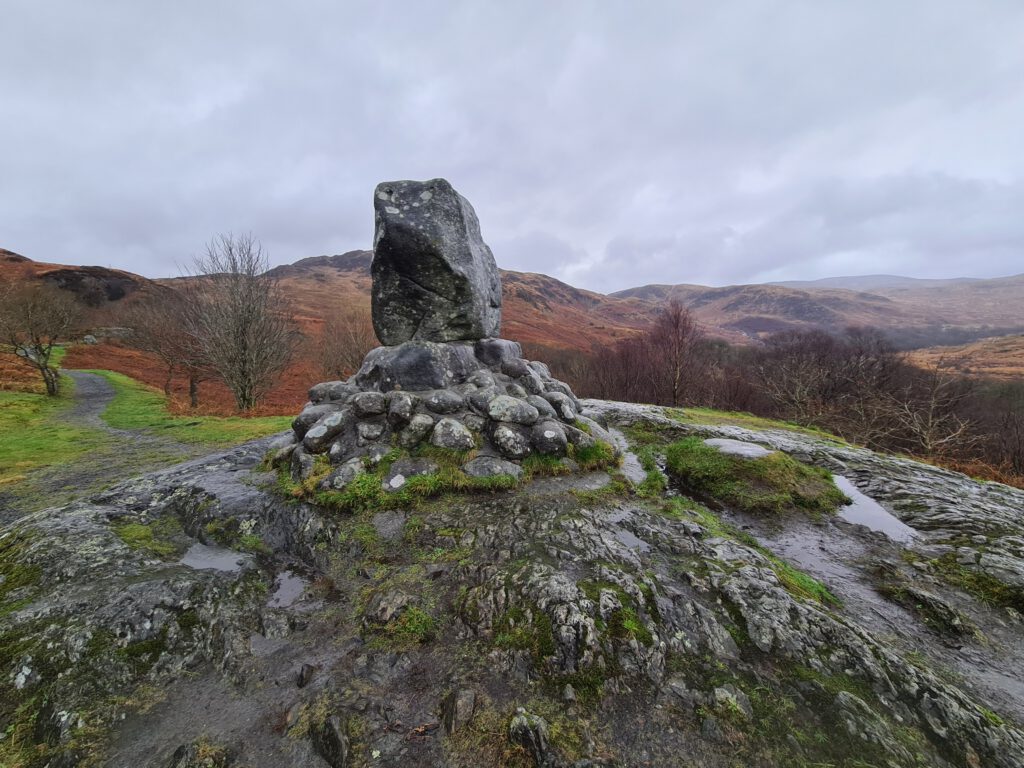
Having landed on his own land, Carrick, Robert knew not just that he could enlarge his army here but also that he had a very big advantage, having known the lands all his life he was in control over advantages battle grounds to boost morality and get back much of the land over which people he ruled (yes, he ruled the people not the land, hence King of Scots and not King of Scotland!). He wouldn’t have been caught of guard again, most certainly not on common ground!
Having learned something from Wallace for sure Bruce would have never risked a pitched battle, which by the way would have taken his advantage of the Highlander charge away as well. The small attacks leading up to the Battle of Glen Trool are one of the reasons why people joined Bruces campaign again, they had hope again and Bruce seemed to be succeeding in gaining back the Scottish freedom, but still many wanted more assurance and so the army of Robert was still very small when they camped on the shores of Loch Trool.
Hearing about Bruce’s return Valence mobilised his forces from Carlisle and started marching up through Dumfries and Galloway towards Glen Trool, which located in the Southern Uplands is a very small glen offering very little opportunity to get through, at least for a big army, it most certainly would have a slowing down effect, a narrow path between the steep hills and Loch Trool… I personally wouldn’t wonder much if the English lost a few men to the terrain before even coming close to Bruce’s camp.
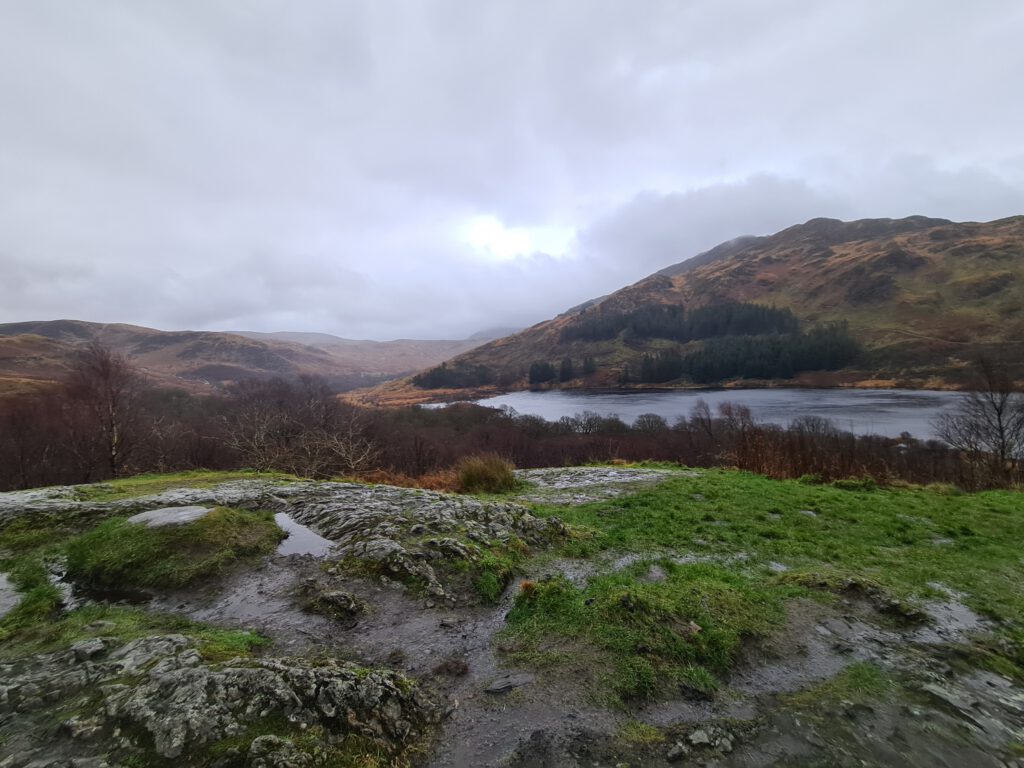
The location was ideal for a guerrilla attack, or if you’d like to call it that, a simple ambush. Upon reaching the head of the loch, close to the Scottish camp, Bruce gave the order for his men to attack the English forces (keep in mind that a big part of those forces also were Comyns, etc.). In this case attacking ment the men to role boulders and hurling rocks down the hill, right into the English forces, while adding arrows to the lethal attack. After creating a big lot of confusion and many casualties it was time for the most famous of the attacks, the charge down the hill, which I personally like to compare to the Highland charge, used to successfully in many previous and following battles. The position in Glen Trool was just the best decision Bruce could have made, to this day the area where the Scots stormed down are referred to as the ‚Steps of Glen Troll’ which does say a great deal about how they look.
Charging into the centre of the bit of English line, which was created, the army was cut into half, leaving little room to manoeuvre through the broken ground of a changing vegetation, preventing any military formation from forming. This led to the opposing troops to suffer heavy losses. It was the first slightly bigger victory for Bruce since his return, but the effect it had was unbelievable. While it gave the fighting men back their trust into Bruce’s abilities it also led many others to join his cause and support the ‘true Scottish King’. So basically, with this victory the morale level was back to very high.
One reason for the success of this attack was for sure the English pride, they always used to think they would just need to show up and by that would basically win the battle without lifting a single finger but they stood against Scots fighting for their believes and the king they thought to be the true one which brings a well bigger encouragement for battle, never to mention the motivation of freedom of their land after years under English control.
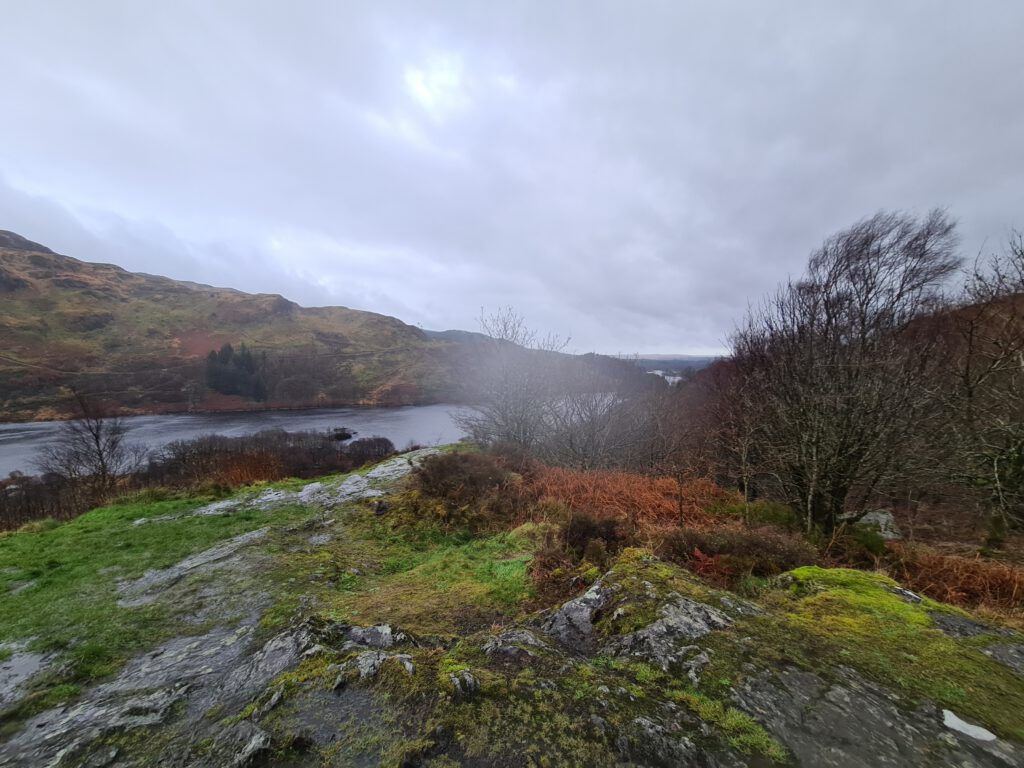
The lost battle was a thorn in the eyes of the English and mainly Valence so of course this wasn’t the end of the story, with the battle of Glen Trool leading up to the even more famous battle of Loudon Hill, which might have been a bigger win, but it would have never come as far without the previous encounter at Glen Trool. The Battle of Glen Trool as well as the whole campaign led up to the famous The Battle of Bannockburn – A scottish World as well as many others.
Maybe the point mostly connected with the Battle of Glen Trool today, which is located on the opposite side of the battle location, overlooking the battlegrounds. Right at car park for Glen Trool and the Merrick hike you can find Bruce’s Stone which is believed to be the location from where King Robert the Bruce watched and coordinated the battle. Bruce’s Stone is a large boulder which was unveiled on 5th June 1929, which was the 600th anniversary of Bruce’s death.
Not far from here you can also find the so called ‘Soldier’s Holm’ which is thought to be the spot where the killed from the battle were buried.

Regarding the date of the battle there are different options of the exact time it happened, it might have been April 1307 (which is also inscribed on Bruce’s Stone) or even June 1307 which would be after the battle of Loudon Hill, I for my part went through many different opinions about the date but decided to go with the April time slot 😉 giving that I also think Robert wouldn’t have had much of an opportunity at the battle of Loudon if his forces wouldn’t have had the motivation of a won battle just a month earlier.
At this point I will ad a personal suggestion for you, the movie ‘The Outlaw King’ is a very great depiction of a dirtier battle and parts of the history surrounding Robert the Bruce, keep a close eye on what really happened and what is fiction though… However, it is a very good movie, even if a bit brutal in places.
The area of Glen Trool is well known for great opportunities for stargazing.

Stay responsible in your travels and enjoy the beauty of Scotland with all it has to offer. Feel free to send me inspirations for further travels to Scotland or Blogposts. If you have requests, please don’t hesitate to contact me.
